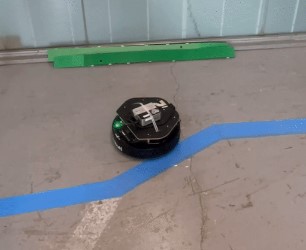
Photo credit: Raimund Krenmueller
Description
Ongoing progress in computational performance and sensor technology is enabling a trajectory towards digital production machines that are capable of dealing with the unexpected – chaotic environments, material indeterminacies, accidents, chance encounters etc..
What is still a fairly high-tech notion in the world of machines, can be observed in even the most ordinary of natural organisms. Evolution, “The blind watchmaker” (Richard Dawkins), has created autonomous behaviors that are still unmatched by any human design, and that we look up to for their complexity and beauty.
With natural evolution being so clearly capable in controller design, it seems an obvious ambition to mimic and harness its mechanisms technologically. Based on this notion, artificial evolution – studied and developed by computer scientists for several decades – has been applied in evolutionary robotics to evolve the “brains” of robots, in the form of artificial neural networks.
The potential of this approach is closely related to the speed and fidelity of computer simulations, in which the fitness of the evolved solutions is determined. As these continue to grow, it can be expected that artificial evolution approaches will become increasingly powerful as well, making them an appealing tool to investigate for autonomous construction applications.
One particularly promising domain is the design of collective behaviors of robot teams, or on a larger scale, swarms. Where the global outcome emerges solely from the interactions of many individually controlled agents without any birds-eye view, how can a certain desired result possibly be engineered? Artificial evolution may provide a solution to this apparent paradox.
Building Instincts, 3rd edition
In this workshop, neuro-evolution (artificial evolution defining neural networks), is investigated as a strategy to develop autonomous behaviors of mobile robots that collectively perform basic construction tasks.
The method and the associated software framework for artificial evolution of robot controllers based on NEAT, is applied in experimental setups with increasing complexity.
In this edition of the workshop, we will aim at transferring the evolved neural controllers from the digital to the physical realm using turtle bot teams. The evolved controllers are hosted in a designated ros node that can be both accessed from the simulation as well as the physical robots.
Learning Objectives
- Understanding the core concepts of neuroevolution for robotics
- Develop the ability to use advanced robotic simulation tools
- Develop the know-how and techniques to set up and run a neuroevolution process
- Applying the acquired Networks in a physical multi-robot scenario in the context of autonomous construction
- Deepening and applying knowledge about Neural Networks and Evolutionary Computation
- Deepening and applying knowledge about ROS






